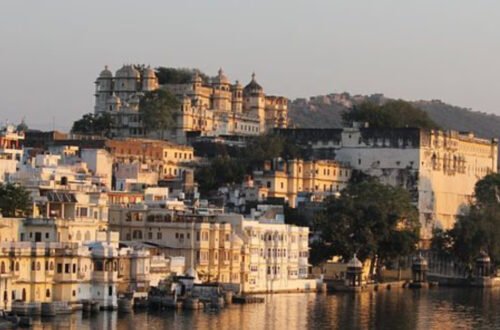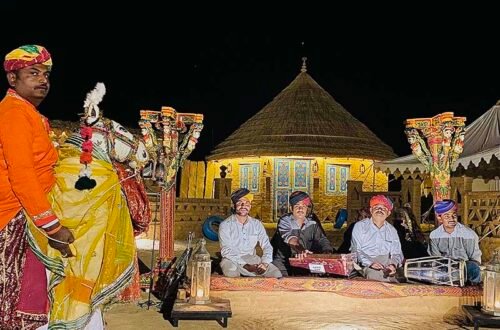There’s no better way to experience India than through its food, and nowhere does food tell richer stories than the bustling streets of Old Delhi. This historic part of the capital is a living museum of Mughal heritage, where each lane and turn holds the scent of roasting spices, frying dough, and simmering gravies. Whether you’re a first-time visitor or a returning enthusiast, the Best India food tour often begins right here, in the chaos and charm of Old Delhi. But what does it mean to truly “eat like a local” in this culinary haven?
Understanding the Culinary Landscape of Old Delhi
Old Delhi isn’t just a location; it’s a layered experience. Once known as Shahjahanabad, this walled city was the seat of power for the Mughal Empire, and its cuisine reflects centuries of influence, innovation, and indulgence. Eating like a local here means stepping off the beaten path and embracing street food vendors, legacy eateries, and age-old recipes that have remained untouched for generations.
Locals don’t look for shiny menus or décor. They follow their senses — the sizzle of a tava, the smoky trail from a charcoal grill, or the familiar yell of a vendor calling out fresh samosas. They know that the real flavor lies beyond the guidebook. Food in Old Delhi is not just about taste — it’s about context, history, and connection.
Street Food Staples You Can’t Miss
If you want to eat like a local, you have to know what locals eat. Here are some must-try dishes and where you’re likely to find them.
- Aloo Tikki & Papdi Chaat: No visit to Old Delhi is complete without trying chaat. Found at every corner, chaat is the beating heart of North Indian street food. Tangy, spicy, and crunchy, each bite of aloo tikki or papdi chaat tells a story of balance — between flavor, texture, and temperature.
- Dahi Bhalla: Fluffy lentil fritters soaked in chilled yogurt and topped with chutneys. Locals often prefer the versions sold at legacy shops in Chandni Chowk, where consistency and freshness are daily promises.
- Bedmi Puri and Sabzi: A popular breakfast option, this deep-fried delight stuffed with spiced lentils is served with tangy potato curry. Locals line up early for this hearty meal at places that have been serving it for over 50 years.
- Parathas from Paranthe Wali Gali: A legendary lane where each shop offers a dizzying variety of parathas — from banana to bitter gourd. Here, eating like a local means ignoring the fancy and embracing the absurdly delicious.
- Seekh Kebabs and Mutton Korma: For meat lovers, the grilled skewers near Jama Masjid are unmatched. Tender, juicy, and smoky — these kebabs are an essential part of the local meat culture, often eaten with roomali roti straight off the flame.
Navigating the Chaos Like a Local
Old Delhi is not always easy to navigate, especially when you’re distracted by the aroma of hot jalebis or the sight of simmering nihari. But the seasoned food-loving locals know a few tricks.
First, timing is everything. Locals tend to avoid weekends for popular stalls — not because the food isn’t good then, but because queues are longer and crowds dilute the experience. Early mornings and late evenings are golden hours.
Second, they know the vendors by name. The kebab seller across from the mosque or the chaat vendor near the temple — these aren’t anonymous street cooks. They’re artisans in their own right. When you eat like a local, you listen to their stories, accept their recommendations, and trust their timing.
Finally, forget about calorie counting. Local food culture here is about indulgence, not restraint. Balance it out with long walks and short naps.
Why Guided Walks Are Still Part of the Local Experience
You might think guided food walks are only for tourists. But the truth is, even many locals take part in curated experiences to discover corners and kitchens they’ve never explored before. With something as detailed as an Old Delhi food walk tour, you get the benefit of a structured route, deep historical insights, and access to places you might miss on your own.
What makes these tours different from regular dining is the immersion. You’re not just eating; you’re learning about the origins of each dish, the migration of recipes, and how families pass on culinary legacies. In a city that has both imperial past and modern buzz, knowing the background enhances the bite.
A Culinary Gem: The Chandni Chowk Food Tour
A specialized Chandni Chowk Food Tour offers more than just food — it’s a journey through the senses. Chandni Chowk, with its chaotic beauty, is home to some of the city’s oldest eateries, where secret spice blends and charcoal-fired recipes are fiercely guarded.
The tour may take you through shops that date back to the 1800s, sampling daulat ki chaat — a winter-only, airy milk dessert — or watching your kebabs prepared on iron skewers that haven’t changed in decades. Eating here like a local means being patient, polite, and present.
Final Thought: Respect the Plate, Respect the Place
Eating like a local isn’t just about what you eat; it’s about how you eat. Respect the culture, the vendors, and the chaos. Don’t haggle over food. Don’t waste. And never leave without saying thank you — in words or in a smile.
Old Delhi may test your comfort zones, but if you follow your senses and stay open, it will reward you with the kind of experiences no polished restaurant can offer. Here, eating is not just a necessity — it’s a celebration of life, shared across generations and served with a side of nostalgia.





